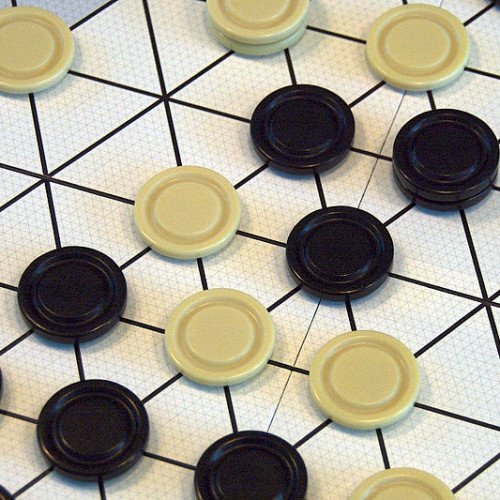BATTLESHIP VS GIPF

BATTLESHIP
Battleship (also Battleships or Sea Battle) is a strategy type guessing game for two players. It is played on ruled grids (paper or board) on which each player's fleet of ships (including battleships) are marked. The locations of the fleets are concealed from the other player. Players alternate turns calling "shots" at the other player's ships, and the objective of the game is to destroy the opposing player's fleet. Battleship is known worldwide as a pencil and paper game which dates from World War I. It was published by various companies as a pad-and-pencil game in the 1930s, and was released as a plastic board game by Milton Bradley in 1967. The game has spawned electronic versions, video games, smart device apps and a film. The game of Battleship is thought to have its origins in the French game L'Attaque played during World War I, although parallels have also been drawn to E. I. Horsman's 1890 game Basilinda, and the game is said to have been played by Russian officers before World War I. The first commercial version of the game was Salvo, published in 1931 in the United States by the Starex company. Other versions of the game were printed in the 1930s and 1940s, including the Strathmore Company's Combat: The Battleship Game, Milton Bradley's Broadsides: A Game of Naval Strategy and Maurice L. Freedman's Warfare Naval Combat. Strategy Games Co. produced a version called Wings which pictured planes flying over the Los Angeles Coliseum. All of these early editions of the game consisted of pre-printed pads of paper.
Statistics for this Xoptio

GIPF
GIPF is an abstract strategy board game by Kris Burm, the first of six games in his series of games called the GIPF Project. GIPF was recommended by Spiel des Jahres in 1998. Players take turns pushing tokens (one player taking black, the other white) from the edge of the tri-gridded, hexagonal board, with pieces already in play pushed in front of the new placements rather than allowing more than one piece on any space. The game is lost if a player has no more tokens to play, and since each starts with a set number of tokens, it is clearly necessary to recycle pieces already positioned to keep playing. This is achieved by contriving to line up four pieces of the same colour in a row on the board, at which point those tokens are returned to their owner, and any opposing tokens extending from the line of four are captured. Because a single player will often move several pieces and change numerous on-board relationships, it is remarkably difficult to predict the state of the board more than one turn ahead, despite GIPF being a game of perfect information. Play tends to be highly fluid and there is no real concept of long term territorial or spatial development. The game can be expanded with extra pieces (available separately) called Potentials, which allow different kinds of moves to be made. These are named for the other games in the GIPF Project, though the other games are not actually necessary in order to utilise the Potentials named after them.